In construction, delays and mistakes are extremely costly. So it would make sense for the sector to want to use all the help it can get from tech to stay within deadlines and budgets.
Yet, the construction industry has been notoriously slow to enter the digital era.
However, in recent years, the interest in cloud solutions in construction has been booming. In 2012 only 15% of contractors considered cloud computing important for their business.
Meanwhile, by 2017, 85% of construction contractors said they were using or planning to use cloud-based solutions.
Construction businesses are discovering the advantages of switching from analog methods to cloud-based SaaS solutions. If you’re still hesitant about making the leap, here are five great benefits of cloud computing to consider.
In this article...
Improved Flexibility and Mobility
Building something from the ground up requires many moving parts and numerous people to work together like a well-oiled machine. As Michael Wright, CEO of RedTeam, put it in an interview, construction work is like “manufacturing in the field”.
But unlike manufacturing, which takes place in the controlled conditions of a factory, construction work is subject to unpredictable external factors.
For instance, the weather is often bad, a crucial piece of equipment can break down in the middle of nowhere, or the supplier may be late delivering the materials.
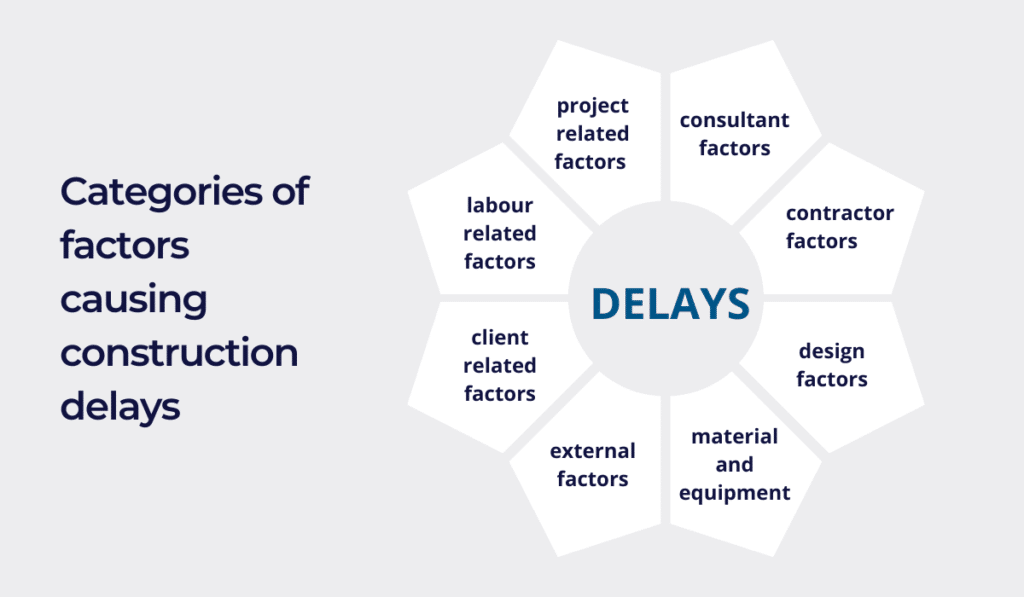
Reorganizing work in such scenarios would have taken hours or days in the old times. But now, with information circulating to, from, and between sites in real-time, you can curb many of these uncertainties.
Smartphones, tablets, and other GPS-enabled assets are becoming a staple on construction sites. Communicating and implementing changes in real time is making businesses more agile and better equipped to adjust to complications.

For instance, with task management software for construction companies, you can assign specific tasks to specific employees from your tablet or smartphone. You won’t waste resources traveling to and from the site for trifles.
Check out the example pictured above—for each task, you can even add further information, such as the color code for touch-up painting jobs.
During pandemic lockdowns in particular, construction businesses using cloud-based tools found themselves in a much better position than those still managing all data in centralized units.
Even when offices were closed, cloud solutions and your administrative data were still available anytime and everywhere you had internet access.
Therefore, office teams, such as sales, HR, or accountants, could work from their homes safely and efficiently.
But what about onsite workers? To quote Chris Hopper, executive vice president and general manager of Skanska: “You can’t hang drywall from your house.”
However, through cloud-based apps, site managers could still send out work orders, assign teams to sites, and, if necessary, adjust schedules to ensure social distance.
Furthermore, some AI-powered cloud solutions even enable supervisors to inspect progress without so much as stepping foot onto the site.
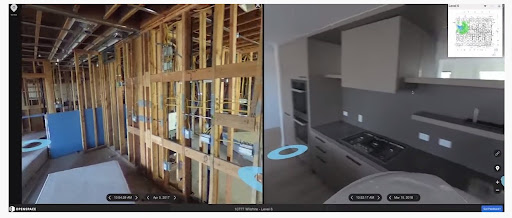
Flexibility and mobility are some of the greatest advantages of cloud computing for construction businesses.
You can take your data everywhere, quickly adjust your plans for maximum efficiency, and reduce costs that stem from delays or poorly communicated instructions.
And even when there’s no such gargantuan disruption as a worldwide pandemic, these benefits are not to be underestimated.
Easy Information Access and Sharing
In a 2018 study on cloud potential for construction project management conducted by Applied System Innovation, the access to and sharing real-time data ranked first.
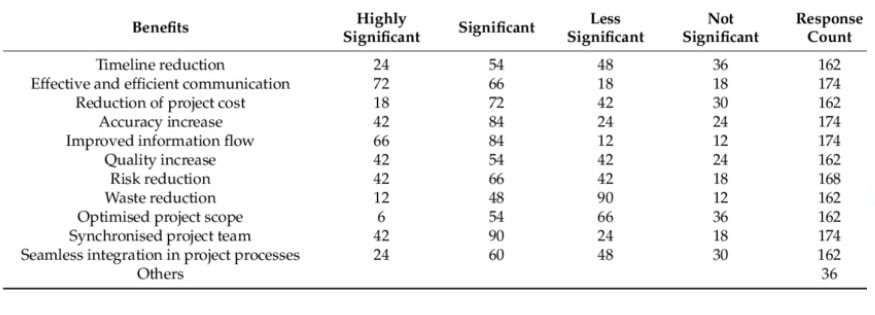
And it’s no wonder that this benefit tops the list; vast amounts of correct and timely data need to reach the right people, within and outside the company, for the project to be successful.
However, gathering and managing data from multiple sources can be slow and messy if you still rely on Excel sheets and emails.
And while you certainly can send out Excel files as attachments, the method is so ripe with risks that it can create more problems than it solves.
Cloud-based construction project management software is a much more effective solution. It integrates collaboration and communication, stores all files and contacts, and automatically syncs all updates on a project.

You can share data and dashboards with everyone involved, and everyone is notified of changes. Maintaining such a unified database as a “single source of truth” for everyone to access prevents blind spots and inaccuracies at all levels.
And no less important—you have an audit trail in case of inspections or disputes.

Using cloud-based software to easily communicate with stakeholders and clients is a great advantage in itself.
That’s because access to timely and accurate information fosters better business relationships. Your procurement processes, bidding, and construction management become more transparent as well.
However, you can improve collaboration and communication within your teams, too.
Take, for instance, equipment and asset management. Each time one of your employees takes a piece of equipment, they can scan it and check the item out through a cloud-based asset management tool like GoCodes.

Other team members can instantly see who has the tool, where it is, and how long it will be unavailable. This saves hours of searching through warehouses and paper records that workers can better spend elsewhere.
Furthermore, other departments benefit from access to asset management tools as well.
For instance, when budgeting for new equipment, your finance team can log in to analyze which tools you use often or where you spend the most on maintenance.
Even your legal team will find access to your maintenance logs useful in case of warranty or safety disputes.
Timesheets are another example worth mentioning in the context of collaboration. If your employees still use paper and pen to log hours, your payroll period probably looks like this:

It’s a nightmare to gather and organize paper timesheets for accounting, but it doesn’t have to be.
Timesheet apps enable employees on the field to easily log in, log out, and track breaks or absences. The apps provide reports on billable hours, which integrate with your payroll system.
The whole process is far less chaotic for your accounting team and much faster than the original way of doing things.
On top of simplifying payroll, such apps can indicate whether some employees are overworked or frequently absent. This is valuable data for HR and project managers to investigate further and improve working conditions.
Time is money, and cloud-based tools significantly reduce the time needed for retrieving and analyzing data, so all your departments can work more efficiently and accurately.
Reduction in Operational Costs
Cloud-based tools now enable financial managers not only to tell where and when costs were exceeded but also why.
Insights gathered and analyzed through your business tools provide a complete overview of current and past costs, so you can zero in on those red flags and work on optimizing them.
Furthermore, AI-powered software tools offer a whole new dimension: predicting where and why you might incur high costs in the future.
Using data to predict potential outcomes, i.e., predictive analytics, is a method of uncovering trends, patterns, and correlations within existing sets of past data, then making predictions based on these findings.
This, according to Sage customer experience director Dennis Stejskal makes a construction financial manager go “from a financial historian to a financial visionary”.
Predictive analytics can be used anywhere in the construction business—from predicting cash flow, lowering risks and incident rates, to predictive asset maintenance, to effectively reducing overall operational costs.
For instance, one of the most interesting aspects of predictable analytics for construction is telematics. The term generally refers to monitoring vehicles, equipment, and other movable assets.
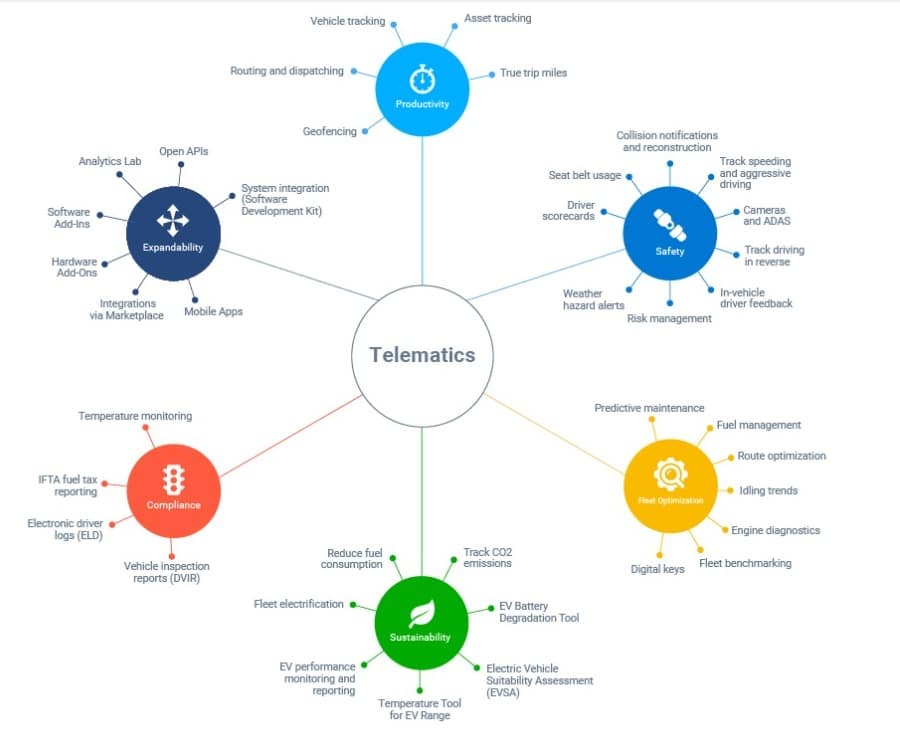
A small device with a SIM card is installed in the vehicle, which then transmits a variety of information about the vehicle to a cloud-based solution, such as fleet management software.
You can learn a lot about how your fleet functions and what you can improve to save money from the data the asset submits.

Reducing operational costs and improving driver safety are pressing matters in construction.
In 2017, 80% of companies said they used or planned to start using telematics the following year. Out of that, 75% stated they would use it to monitor equipment, 61% were interested in tracking speed, and 53% in tracking driver hours.
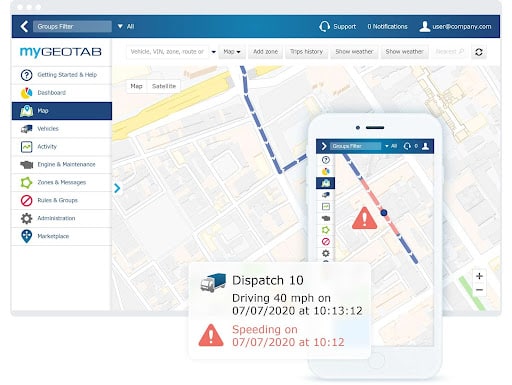
And what about the savings?
Well, according to the same survey, at least half of organizations using telematics managed to reduce fuel costs by up to 40%.
Now, imagine if you had to gather all that data on paper or host it on your local servers or drivers. The more clients or data you accrue, the more you have to invest into IT infrastructure.
But with cloud-based solutions, you need less storage, space, equipment, and fewer people to manage your tech stack, as all data is stored in the cloud and managed by the service provider.

Additionally, as your client base grows, you can upgrade your software plan with a few clicks without the need to invest in new hardware or server space.
So not only do specific solutions and analytics help you reduce costs in certain areas of your business but operating those tools is also a lot more affordable than paper or on-premise software.
Top-Notch Data Security
Security concerns are a common cause of hesitation about transferring data to the cloud. It can feel like you’re uploading a lot of sensitive information such as intellectual property, plans, drawings, or financial data available for everyone to find online.
If you think your data is safer on your password-protected office computer, safeguarded by a firewall or antivirus software, think twice. According to James Benham, CEO of JBKnowledge, it’s a false sense of security.
Benham worked as a security consultant and used white hacking methods to test the security of on-premise systems. He says that breaching a client’s on-premise systems was generally easier than accessing their cloud-based data.
In some cases, all it took to get into on-premise data was a virtually harmless email containing a cat video. Once played, the video downloaded an invisible script allowing Benham to take over the entire network.

And phishing scams like this are not unheard of in the construction industry.
Aside from phishing scams, your on-premise IT infrastructure is subject to many other security threats, such as natural disasters, outdated security procedures, or simple mishandling of data by employees.
To prevent such issues, operating in the cloud is a more sensible solution.
First, all it takes is the computer crashing or accidentally getting damaged. Unless you have a backup, it costs a lot of time and money to save your data – if it’s possible at all.
But with cloud hosting, you can log in to your account from a different device and pick up work where you left.
This makes disaster planning and recovery much less stressful. There’s barely any disruption to your workflow. At most, the software can experience slight downtime for regular updates—but even then, it’s mere minutes long.
Additionally, maintaining security on your own requires constant vigilance and investment, as hackers are honing their methods at a rapid speed.
Unless you have top-notch security talent on your team, the chances are you’re already one step behind on protecting your data.
However, software providers must comply with stringent safety standards and ensure top-notch mechanisms to safeguard your data against intrusion. These security mechanisms are regularly revised, tested, and updated by the vendor.
Lastly, you have more control over who has access to the data stored in the cloud.

You can ensure that no one can access your data unless you permit it by allowing access only to authorized users with unique login credentials.
Further security best practices include multi-factor authentication (such as entering a phone number) or data encryption.
Lastly, many tools also monitor usage and alert you of any suspicious activity. You can take action much faster if you think certain occurrences pose a risk.
Cloud-Based Software Provides a Competitive Edge to Construction Companies
As the industry continues to recover from the pandemic, it’s important to consider how cloud solutions help companies maintain a competitive edge.
Cloud adoption was on the rise even before Covid-19 struck.

The pandemic has only further expedited the adoption of cloud solutions in construction.
The latest AGC report states that, as of 2020, 53% of respondents use cloud-hosted technology for project management, and 68% of contractors use mobile software to create daily field reports.
However, more factors contribute to such fast popularization of the cloud.
Existing technology in construction companies is becoming obsolete. Hence, businesses weigh the pros and cons of spending money on upgrading their current technology or transitioning to more affordable cloud solutions.
And considering that 90% of the industry consists of small and medium enterprises that don’t have budgets for high-tech infrastructure, cloud solutions are a winner in terms of ROI for small businesses.
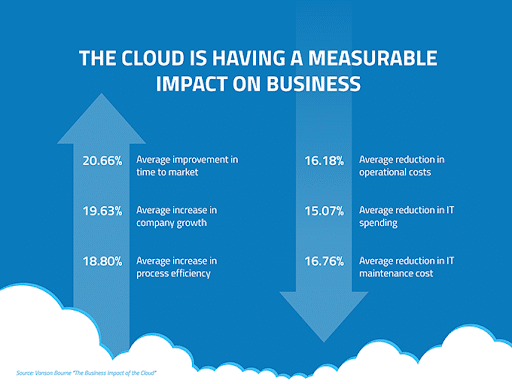
Previously, smaller businesses couldn’t compete with massive enterprise budgets for specialized software. But now, scaleable and budget-friendly cloud solutions enable small businesses to leverage the same technologies as much larger companies.
Furthermore, staff shortage has been an ongoing issue for the construction industry, with employers struggling to find qualified workers long before the pandemic. In 2019, 78% of respondents in the AGC survey admitted they find it hard to fill positions.
However, now millennials and Gen-Z dominate the workforce. As digital natives, they are the driving force of digitization in the industry.

New generations of leaders and managers are turning to more modern and flexible solutions. Furthermore, they’re also creating an environment for attracting more high-skilled workers.
Flexibility is one of the most important considerations for today’s workforce, and implementing remote work policies and procedures is much easier with cloud solutions.
Even if problems with filling positions persist, cloud-based tools make up for it in improved efficiency of the existing workforce and business processes.
So once you start considering cloud tools to help out with the most critical aspects of your business, you can look for SaaS tools specialized for this particular area.
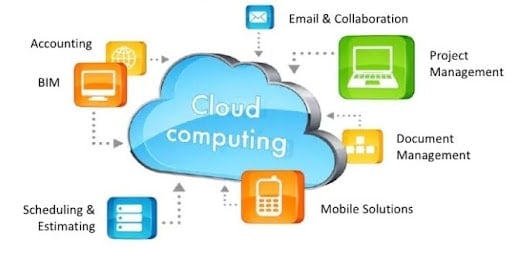
We’ve already mentioned some examples of SaaS solutions for construction businesses, such as:
- Task assignment and tracking
- Collaboration
- Communication
- Accounting and financial management
- Telematics and fleet management
- Employee and project management
- Equipment and tool management
Another particularly beneficial type of software for construction businesses is Building Information Modeling (BIM) software. It allows companies to store, share, and collaborate on building design.

Teams can access all project documentation and 2D and 3D building models to maintain a complete overview of the project from start to finish.
Hence, your projects are much less at risk of running into any design and building issues you did not account for.
Pre-construction software is another interesting example. Builders and subcontractors can use it to create estimates and calculate takeoff costs.

Creating estimates and quotes like the one above takes minutes. Quotes become more accurate, which in turn helps you bid on—and win—more projects.
Getting started with cloud solutions doesn’t mean you need to go all-in at once. A true digital transformation takes time. However, you can start small to optimize the most critical parts of your daily work and build your cloud strategy upwards.
Conclusion
There are many benefits of cloud solutions for construction companies and almost as many concerns about abandoning traditional methods in favor of the cloud.
However, cloud computing is the main driver behind business growth. With faster access and data sharing, you can make your business more resilient, flexible, and efficient.
Furthermore, cloud-based tools contribute to better safety of the data and more practical use of it too. With a more extensive overview of your processes and the computing power to analyze them, you can optimize every aspect of your business.
As existing tech slowly becomes obsolete, implementing cloud tools could put you one step ahead of the competition. Don’t miss out on the chance to grab a bigger share of the market for your company.




